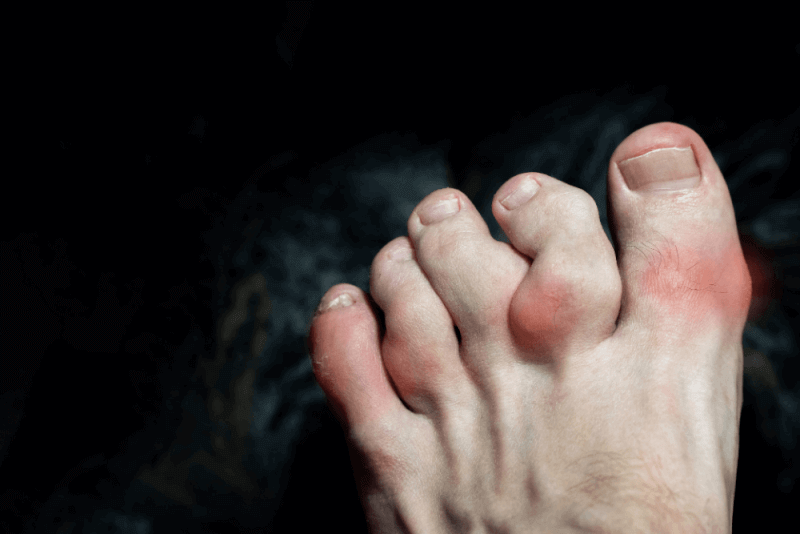30 Second Summary
- Maffucci Syndrome, a rare genetic disorder, causes benign tumors in cartilage structures.
- It is caused by mutations in the IDH1 gene, with IDH2 mutations also involved. Studies show that the mutation occurs before birth.
- People with Maffucci syndrome have a higher risk of developing cancer, with bone and other cancer types being among the most significant complications associated with the syndrome.
- As the exact cause of the genetic mutation in Maffucci syndrome is unknown, prevention methods have not been identified.
What is Maffucci Syndrome?
Maffucci Syndrome, a rare genetic disorder, causes benign tumors in cartilage structures. It typically affects cartilage structures in the hands, causing bone pain and skeletal abnormalities. It also leads to abnormal blood vessel nodules in the skin.
The syndrome, which affects bones and skin, can lead to the following conditions:
- Excessive growth of cartilage in bones (enchondromas)
- Skeletal deformities
- Abnormal blood vessel nodules in the skin (hemangiomas)
Cartilage is a firm and flexible connective tissue that covers bones in joints throughout the body. In people with Maffucci syndrome, benign tumors form in cartilage, leading to bone growth. This results in hundreds or even thousands of enchondromas that cause serious deformities, short limbs, and bone fractures. While excessive growth is typically seen in the hands and feet, it can also affect the following areas:
- Legs
- Ribs
- Skull
- Spine
The abnormal growths are benign but may turn malignant. Around half of people with Maffucci syndrome develop chondrosarcoma, a type of bone tumor that originates in cartilage cells. Additionally, these individuals are at a higher risk for various types of cancer, necessitating regular cancer screening.
Causes of Maffucci Syndrome
Maffucci syndrome is caused by a genetic mutation. The mutations typically occur in the IDH1 gene, although IDH2 mutations are also involved. Studies suggest that the mutation happens before birth. IDH genes are responsible for producing enzymes important for many cells in the body. However, the connection between these enzymes and Maffucci syndrome remains unclear. This condition is not inherited, meaning it is not passed down from family members.
Symptoms of Maffucci Syndrome
The symptoms of Maffucci syndrome can range from mild to severe and may be present at birth, although they typically begin to appear during childhood.
The main symptoms of the disease stem from enchondromas, including:
- Bone pain
- Bone fractures
- Crooked arms or legs
- Swelling in bones
- Curved spine
- Bone destruction
- Short neck
- Uneven arms or legs
Symptoms related to hemangiomas include:
- Blood clots
- Fluid-filled cysts in lymphatic vessels
- Red, purple, or blue skin growths that harden and become bumpy over time, typically seen in the hands
- Underdeveloped muscles
Diagnosis of Maffucci Syndrome
The steps involved in diagnosing Maffucci syndrome include:
- Physical examination to check for symptoms and learn the patient's history
- X-rays and CT scans to assess the condition of the bones
- Surgical intervention to examine bone or tissue samples under a microscope by specialists
Treatment Methods for Maffucci Syndrome
Treatment for Maffucci syndrome requires a team of specialists, including:
- Dermatologists to treat skin disorders and minimize symptoms
- Orthopedic surgeons to treat fractures, correct skeletal deformities, and surgically remove enchondromas
- Orthopedic oncologists to remove chondrosarcoma and monitor patients throughout their lives
- Radiologists to evaluate changes in the bones over time
While there is no cure for Maffucci syndrome, treatments aim to manage the disease and improve the patients' quality of life. Treatment goals include:
- Early diagnosis of cancer for effective treatment
- Preventing or treating bone fractures
- Alleviating symptoms such as pain
Health teams regularly request imaging to monitor the bones. Treatment options for enchondromas or skeletal issues affecting function include:
- Support or surgery to correct scoliosis
- Casting, splints, and surgery to correct fractures
- Foot orthotics, medication, or surgery to reduce leg length differences
- Surgical intervention to correct hand abnormalities
- Surgical removal of enchondromas
In cases where blood vessel nodules cause discomfort, sclerotherapy may be recommended. This procedure involves injecting a solution to shrink the lesions, and in some cases, the nodules can also be surgically removed.
Complications of Maffucci Syndrome
People with Maffucci syndrome have a higher risk of developing cancer, with bone and other cancers being the most significant complications. Additionally, skeletal deformities can affect the patient's quality of life.
While Maffucci syndrome is a lifelong condition, some individuals do not experience major physical issues, allowing them to continue living their lives normally. However, in more severe cases, the symptoms can significantly affect the physical health of the patients.
How to Prevent Maffucci Syndrome
Since the exact cause of the genetic mutation in Maffucci syndrome is unknown, prevention methods have not yet been identified.
What is the Difference Between Maffucci and Ollier Syndromes?
While both syndromes involve enchondromas, Maffucci syndrome also presents with blood vessel nodules, which is the key difference between the two conditions.







